By Martin Pernter, IW3AUT
This article was originally written in 2012, with the aim of optimizing the operation of the X-Fi sound card for use in SDR receivers. These modifications, operating on the base band (the audio frequencies), make the modified sound card also much more performing even for other applications, such as for the reception of VLF signals. Already with excellent basic characteristics, the modified board is one of the best solutions to be used both for generic VLF reception, and for special devices such as induction coils that require high performance even at very low frequency.
The Creative Sound Blaster X-Fi Surroud 5.1 Pro is a external sound interface for PC with a USB2.0 High speed interface. This card are provided with drivers for WinXP, Vista and Win7.
 |
 |
Easy to install, the bus-powered USB 2.0 Sound Blaster X-Fi Surround 5.1 Pro does not require an extra power adapter. Furthermore, this card (in my case: Model no. SB1095) have a ADC (Cirrus Logic CS5345) and a DAC (Cirrus Logic CS4361) which have a dynamic range of 104 dB and work with a sampling rate up to 96kHz/24bit.
(Note: the upper sampling rate limit of the ADC (CS5345) and a DAC (CS4361) are 192kHz). For a SDR (Software Defined Radio) application, a quality 24 bit soundcard running at 96kHz or more is recommended, but this will not always mean to spending many money....
Test1
The first test after the installation was the noise performance, one of most important feature of a soundcard for SDR applications:
Test conditions:
- All analog inputs are unplugged, line input volume is set to maximum
- PC: HP XW4400 Workstation, WinXP SP3
- Software: HDSDR V2.1, left input mode, RBW=11,7Hz vertical scale: 1dB/div from -131dB to -114dB
- sampling rate 96kHz / 24bit

Many spurious emissions spaced by 1 kHz, maybe from the USB power supply line.
The lowest noise level is about -126,5dB at 20kHz
Test 2
The second test was the noise performance at very low frequencies near to 0Hz, another important feature for SDR applications:
Test conditions:
- All analog inputs are unplugged, line input volume is set to maximum
- PC: HP XW4400 Workstation, WinXP SP3
- Software: HDSDR V2.1, I/Q input mode, RBW=11,7Hz vertical scale: 1dB/div from -100dB to -129dB
- sampling rate 96kHz / 24bit
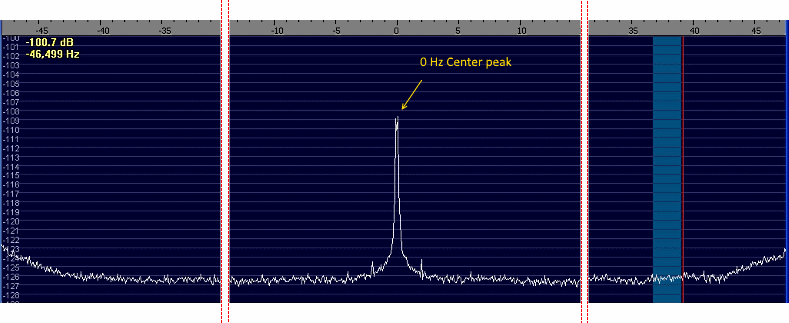
The center peak level around 0 Hz are about -109 dB, maybe due a low filter capacitor for the ADC internal quiescent reference voltage.
The spurious (up to 9 dB above the noise floor) are probably caused by noise on the USB power supply line and can be vary from PC to PC. So i tried to find a solution to reduce these spures. After some tries, i have found the origin of the spurious: The power for the internal analog section (VA) of the ADC.
High dynamic range ADC's needs a clean, low noise power supply.
Noise & spurious level improvement modification
(and improvement of Power Supply Rejection Ratio)
(Important note: Any disassembly and/or modify of the unit will void the warranty!)
Disassemble the unit:

1) Remove the pin's to get the 4 screws, as indicate above.
2) Remove carefully the top cover with the knob:

3) Add a polarized capacitor (1000 uF/ 6,3V) across C100:
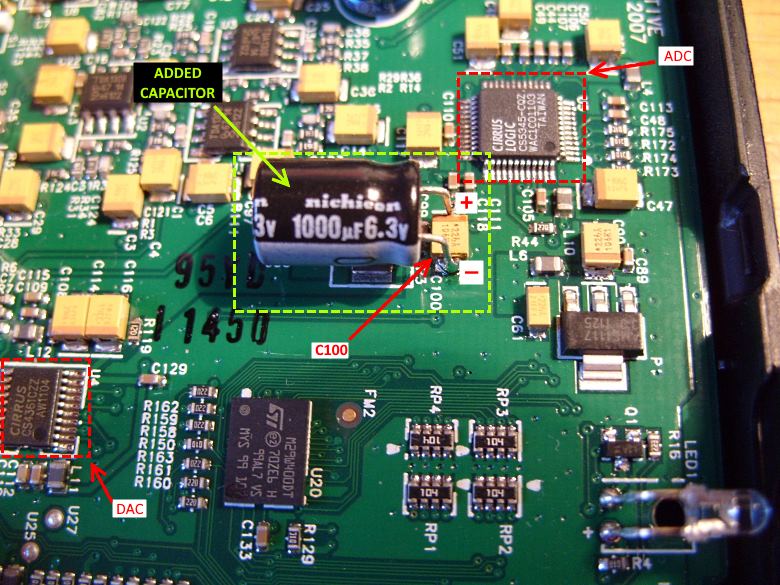
Note: Yes, I know that a huge capacitor (1000 uF) cause a high current peak at power on. However, this does not seem to be a problem in this case...;)
4) Add a polarized capacitor (100 uF/ 6,3V) across C40:

Note: This additional capacitor improve the filtering for the ADC internal quiescent reference voltage, to reduce the noise at very low frequencies.
Modification results
The results after the modification are noticeable: All spures are eliminated and the whole noise level are reduced about by 2,5dB and more (below 2kHz and above 45kHz)!
Before modification:
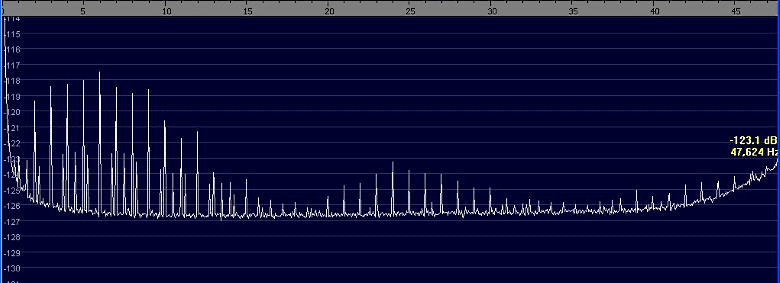
After modification:
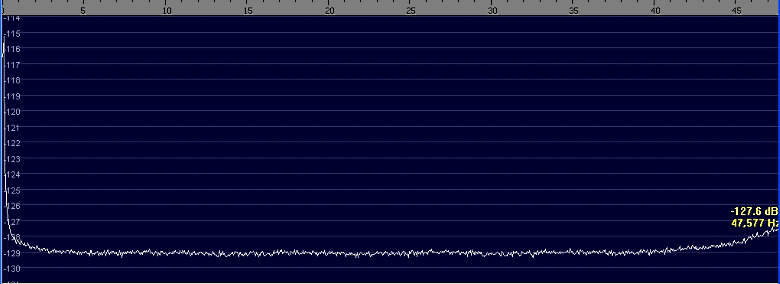
Modification results
Also the result after the modification to increase the filtering for the ADC internal quiescent reference voltage are noticeable: The center noise peak was reduced by 10dB!
Before modification:
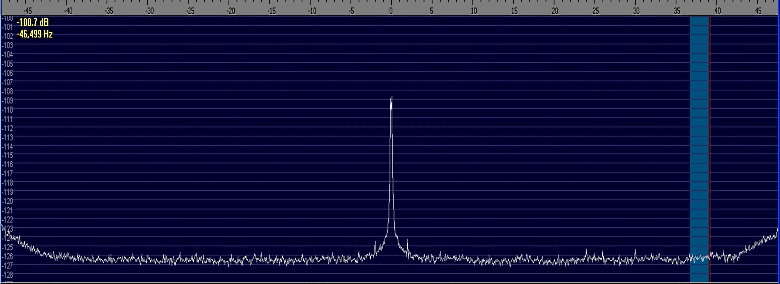
After modification:
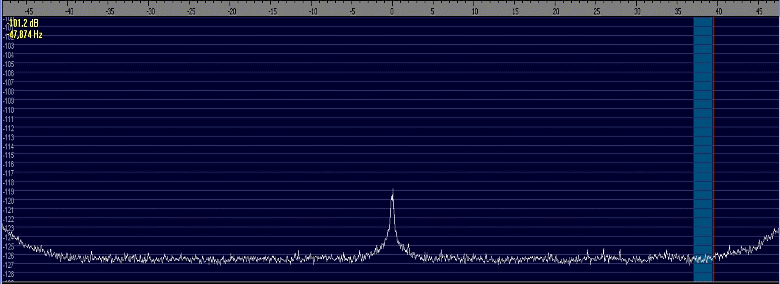
Test of a Sound Blaster X-Fi Surround 5.1 Pro on a “PMSDR” SDR-receiver
Test setup:
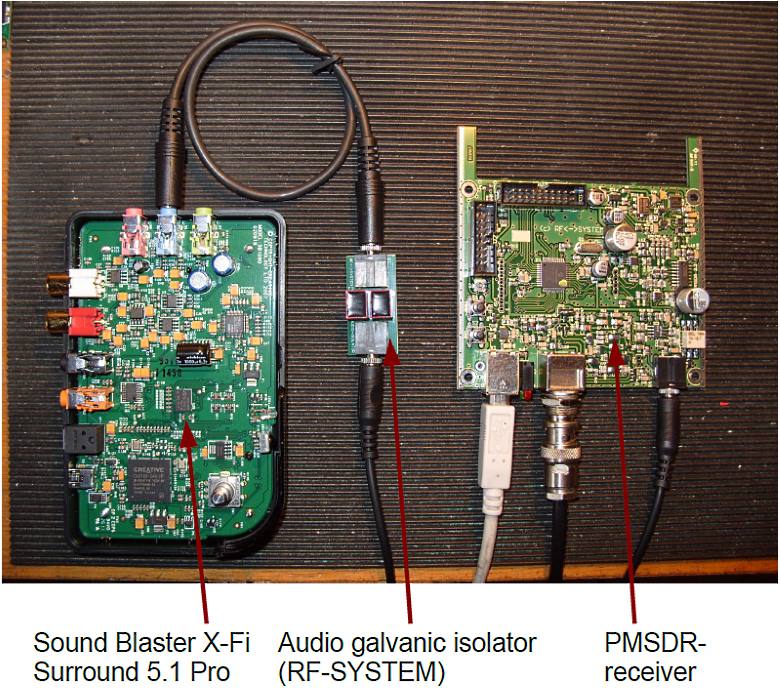
To avoid ground loops between sound interface and receiver, i suggest to use a audio galvanic isolator between the sound interface and receiver I/Q-output.
Test of a Sound Blaster X-Fi Surround 5.1 Pro on a “PMSDR” SDR-receiver
Test setup overview:
Test results
Test conditions:
- Input device:Sound Blaster X-Fi Surround 5.1 Pro, Line input volume is set to maximum
- PC: HP XW4400 Workstation, WinXP SP3
- Software: HDSDR V2.1, RBW=11,7Hz sampling rate=96kHz, vertical scale: 5dB/div from -130dB to 0dB
Test 1: HP8640B Signal generator out: 7100 kHz, level=-130dBm
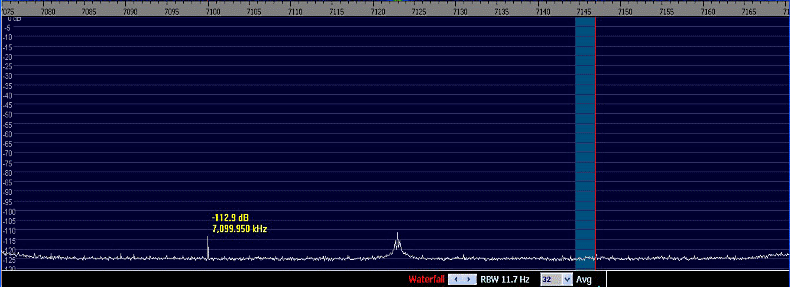
Test 2: HP8640B Signal generator out: 7100 kHz, level=-17dBm
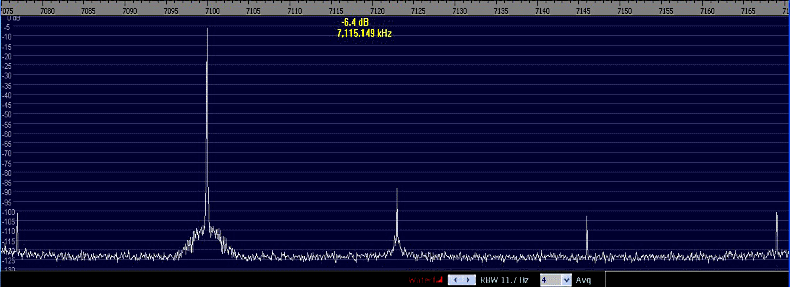
Test 3: HP8640B Signal generator ou: 7100 kHz, level=-16dBm
The A/D converter input goes to "overloading" or clipping under strong signal conditions: in this case a input level of 1,4Vp. This is the maximum input level if the line input volume is set to maximum:
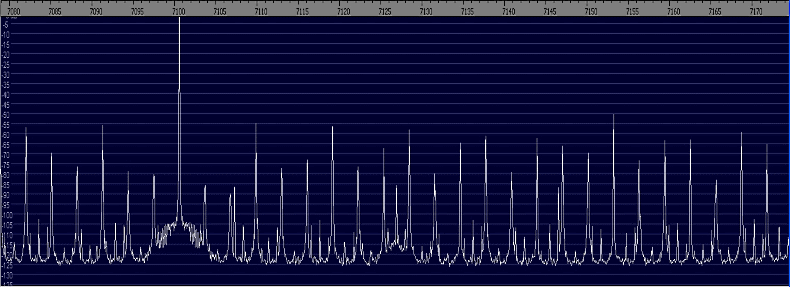
Test 4: HP8640B Signal generator out: 7100 kHz, level=-130Bm
This test was made without the Audio galvanic isolator between the PMSDR I/Q-Output and the Sound Blaster X-Fi Surround 5.1Pro Line-IN. Many spures and noise are present due ground loops:
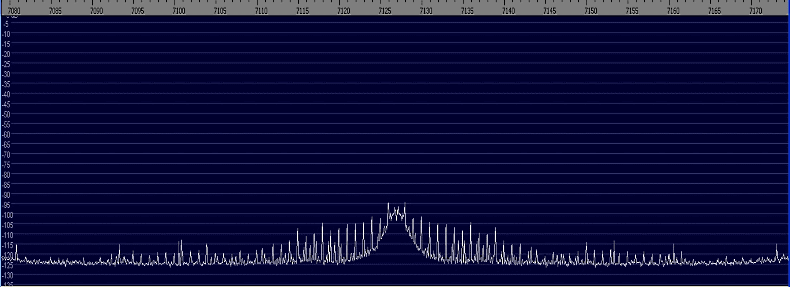
Conclusions
Full scale noise floor after modification:
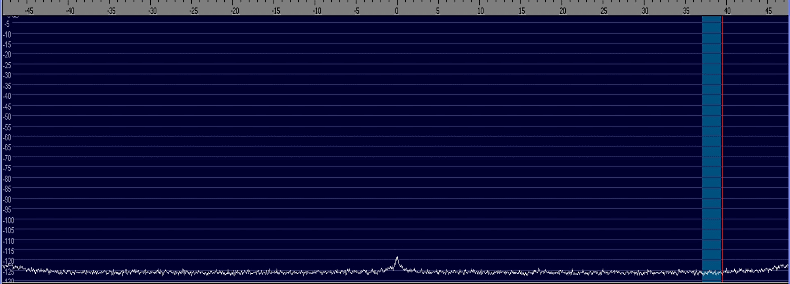
The modified Sound Blaster X-Fi Surround 5.1 Pro shows a very clean spectrum. The above described results can slightly vary between boards.
I recommend to install and use the audio driver from CREATIVE LABS for MS Windows, which offer a better result and permit also to use the virtual audio device “X-Fi Surr 5.1 Pro What U Hear”: This audio device is very useful with digital modes decoding programs (MixW, MTTY, MULTIPSK, Dream) instead of a VAC (Virtual audio cable) to feed the audio output from your soundcard to the input of another software.
For my opinion, this sound interface have a very good cost to performance ratio, especially for SDR applications. Furthermore it's also suitable to use with netbooks/notebooks and small to put it in their bags.
Return to www.vlf.it index